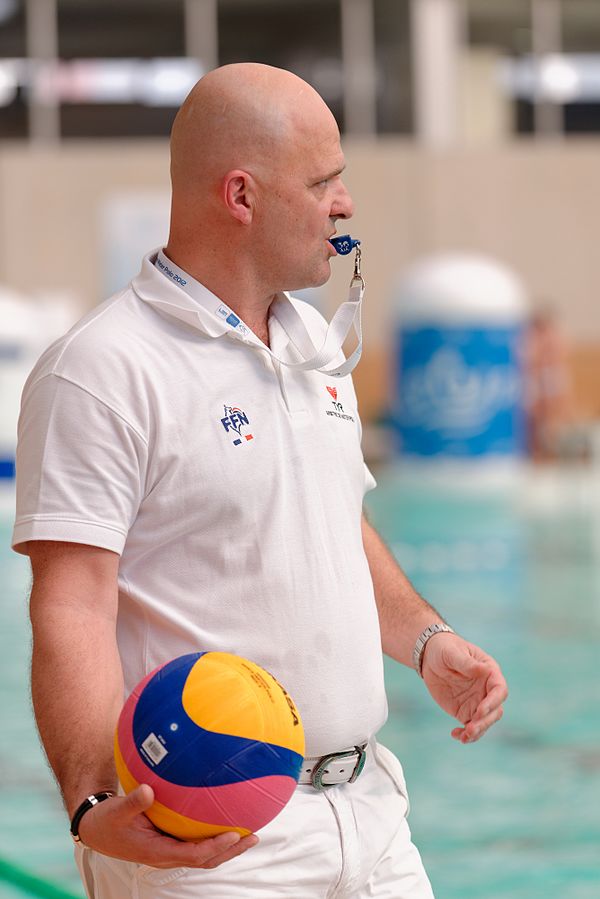Water polo is a sport that requires a unique set of skills and abilities from its players, including speed, agility, and strategic planning. While the game is known for its fast-paced action and physicality, it’s also known for its rules and regulations. One of the most important signals in water polo is the 3 whistles signal, which can have significant implications for the game.
The three-whistle signal is typically used by the referee to indicate a stoppage in play. This can occur for a variety of reasons, including a foul, an injury, or a timeout. When the referee blows three whistles, all players in the pool must stop playing and wait for further instructions.
This article will explore what three whistles mean in water polo and provide some context for when you might hear them. Understanding the different whistles and hand signals used in water polo is essential for players, coaches, and spectators alike.
Whether you’re a seasoned pro or a newcomer to the sport, knowing what 3 whistles mean can help you stay on top of the game and avoid costly mistakes. So, let’s dive in and explore this important signal in more detail.
Overview of Water Polo Rules
Basic Rules of Water Polo
Water polo is a pool sport played between two teams of seven players each, with the aim of scoring more goals than the opposing team by throwing the ball into their goal. Players are permitted to swim with the ball in their hands, but they must pass, shoot or swim within 3 seconds.
The game is split into four quarters, each lasting 8 minutes. Substitutions can be made during the game, but only when the ball is out of play. The winner of a game is determined by the team that scores the highest number of goals by the end of the match.
There are several basic rules that players must follow during a water polo game. Players cannot touch the bottom or sides of the pool during play, except for the goalkeeper. Players cannot hold, push or hit other players, except for the goalkeeper who can use their hands to block shots.
Role of the Referee
The role of the referee is to enforce the rules of the game and ensure that the game is played fairly. The referee has the power to award free throws, penalty shots, and exclude players who break the rules.
In water polo, the referee usually indicates an exclusion by blowing two short and one long blast of the whistle, pointing towards the excluded player and gesturing towards the re-entry area, followed by raising one or both hands and indicating the number of the excluded player.
It is crucial for players to comprehend the regulations of the game and the function of the referee to guarantee a just and pleasant experience for everyone involved.
What Does 3 Whistles Mean in Water Polo?
Definition of 3 Whistles in Water Polo
In water polo, the referee uses whistle blasts and arm signals to communicate with players and officials. Three whistles from the referee indicate a penalty shot, which is a free shot on goal taken from the 5-meter line.
A team is awarded a penalty shot when a defensive player commits a major foul within the 5-meter line, which obstructs a clear scoring opportunity.
As per USA Water Polo, the referee indicates a penalty shot by blowing three short blasts of the whistle and pointing towards the location of the foul, followed by pointing towards the goal line.
The player who takes the penalty shot must be the player who was fouled, and all other players must be behind the half-court line until the shot is taken.
Reasons for 3 Whistles in Water Polo
A penalty shot is a significant advantage for the offensive team, as it is an uncontested shot on goal from close range. Therefore, the rules of water polo are designed to discourage defensive players from committing major fouls inside the 5-meter line.
Some common examples of major fouls that can result in a penalty shot include: – Holding or sinking an opponent who is attempting to shoot or pass – Pulling back or pushing off an opponent who is attempting to swim past – Striking an opponent with the hand or arm – Interfering with an opponent who is attempting to take a free throw or corner throw.
Overall, the penalty shot is an important part of water polo that can swing the momentum of a game. By understanding the definition and reasons for three whistles in water polo, players and fans can better appreciate the strategy and excitement of this dynamic sport.
Conclusion
Water polo is a fast-paced, intense sport that requires quick thinking, teamwork, and skill. Referees play a crucial role in ensuring that the game is played fairly and safely. One of the most important tools that referees have is the whistle, which they use to signal various calls throughout the game.
In water polo, three whistles typically indicate a major foul, such as a penalty shot or exclusion. The exact meaning of three whistles can vary depending on the situation, so it is important for players, coaches, and spectators to pay close attention to the referee’s signals and announcements.
While the rules and calls in water polo may seem complex, they are designed to ensure that the game is played fairly and safely. By understanding the meaning of different whistles and calls, players can improve their performance and avoid penalties, while coaches and spectators can better appreciate the nuances of the game.
Overall, water polo is a thrilling and challenging sport that requires a combination of physical and mental skills. Whether you are a player, coach, or fan, understanding the rules and calls is an essential part of enjoying and succeeding in the game.







